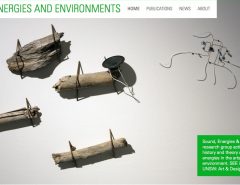K. Stockhausen Interview
Beam me up, Stocky
Karlheinz Stockhausen, the composer who came from Sirius to save the human race, talks to Tom Service about his great masterwork
Thursday October 13, 2005 / The Guardian
Composer Karlheinz Stockhausen has turned himself into a musical myth. This is the man who has influenced everyone from Brian Eno to Björk, and who appeared on the cover of the Beatles’ Sergeant Pepper’s album, sandwiched between Carl Jung and Mae West. On his website, he credits himself as the father of electronic music, spatial music and universal music. He spent 30 years composing seven operas called Licht ("Light"), one for each day of the week, and recently he embarked on Klang ("Sound"), a series of 24-hour-long pieces to be performed in a single day – a sort of musical version of 24, but without the threat of terrorism. As if that wasn’t enough, this 77-year-old musical pioneer has claimed that he comes not from Burg Mödrath, near Cologne (listed as his birthplace on his biography), but rather from a planet orbiting the star Sirius, and that he was put on earth to give voice to a cosmic music that will change the world. He is, to put it mildly, a one-off. […]
I asked him, by e-mail – Stockhausen is too unearthly an entity to commit to many face-to-face interviews – why he chose these two pieces. "The combination makes it clear how much the space composition has evolved from the horizontal to the vertical music." Right. Er …
It’s hard to decode this Siriusian logic, but what it might mean is that "space music" – that is to say, electronic music that is projected from speakers that encircle the audience – can now be projected not just around the hall, but up and down the space as well, creating a three-dimensional experience. That makes sense, since Kontakte is written in four channels, whereas Oktophonie is in eight, giving Stockhausen greater opportunity to diffuse the sound in different ways.
Vía : avant_music_news





Leave a Reply
Lo siento, debes estar conectado para publicar un comentario.